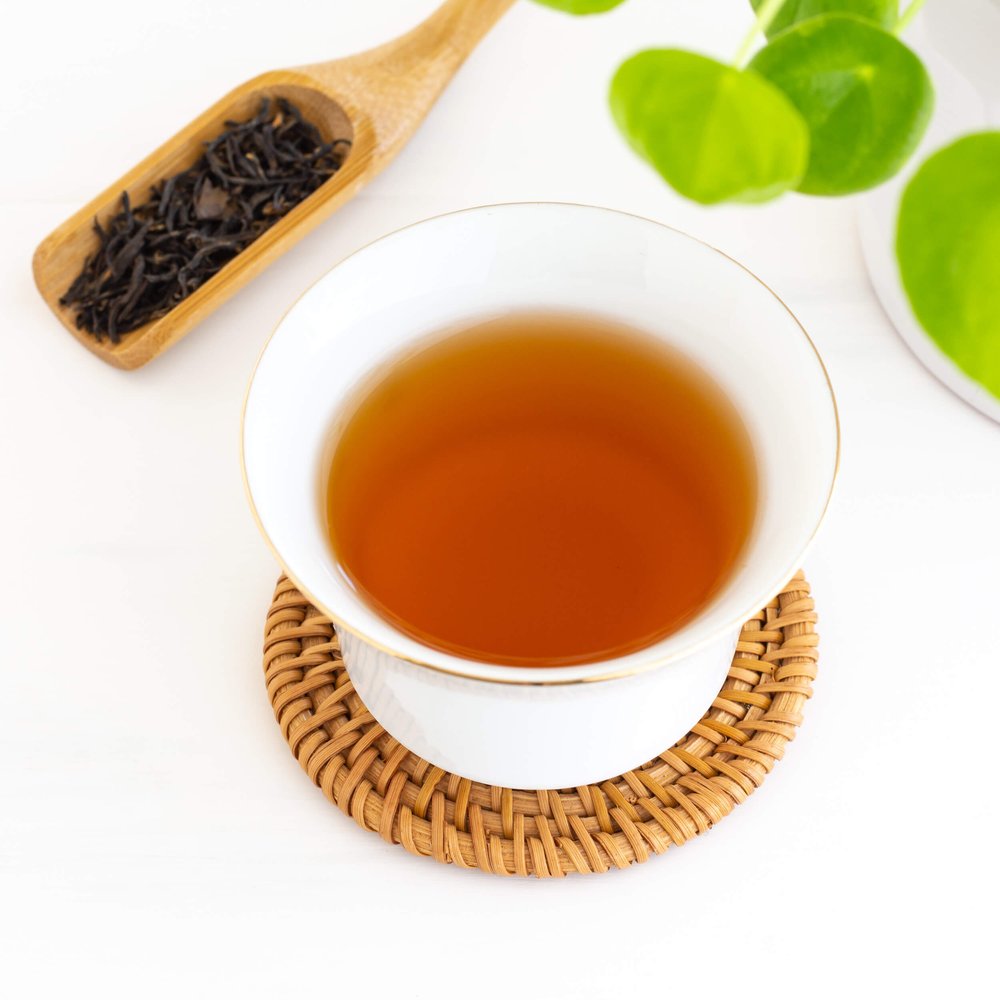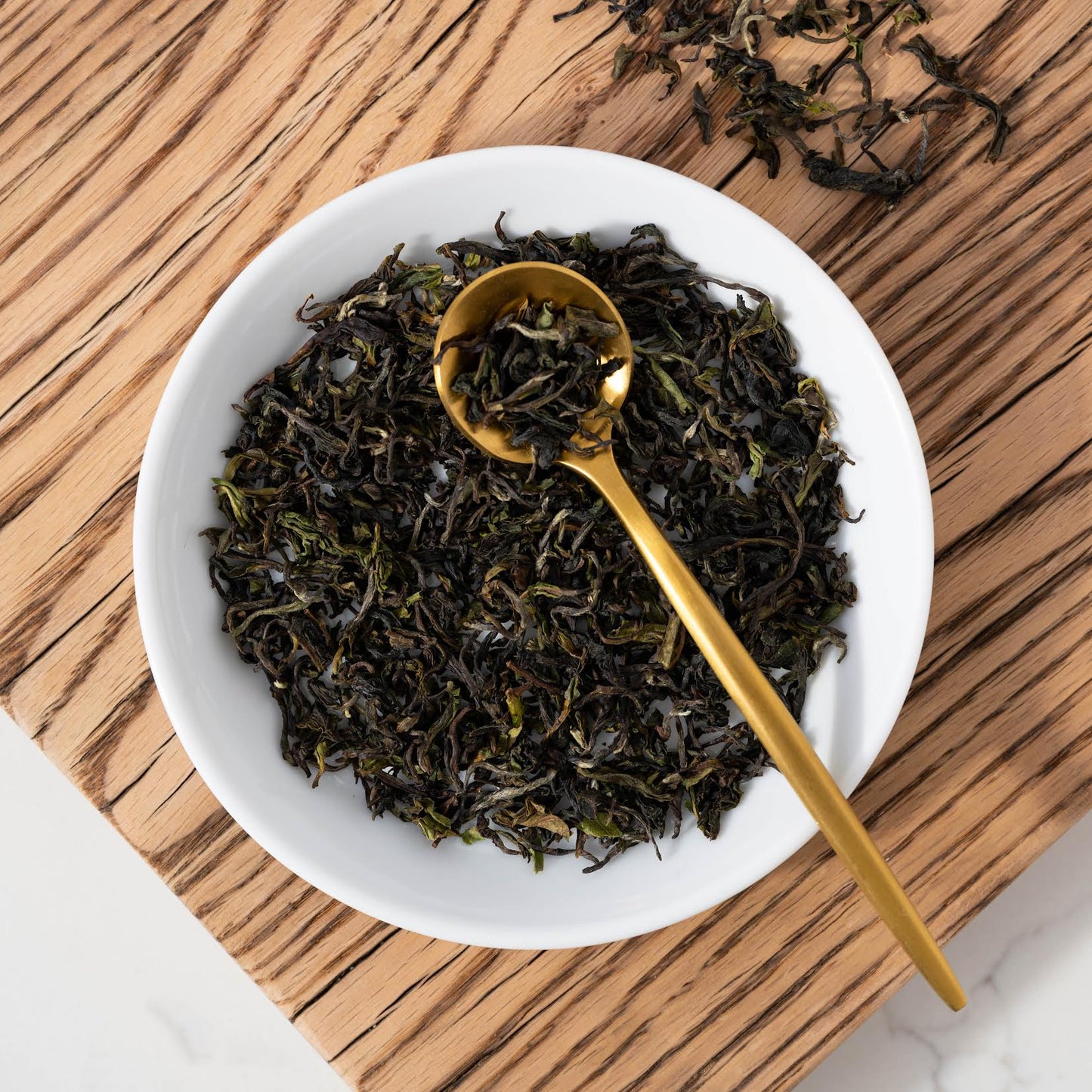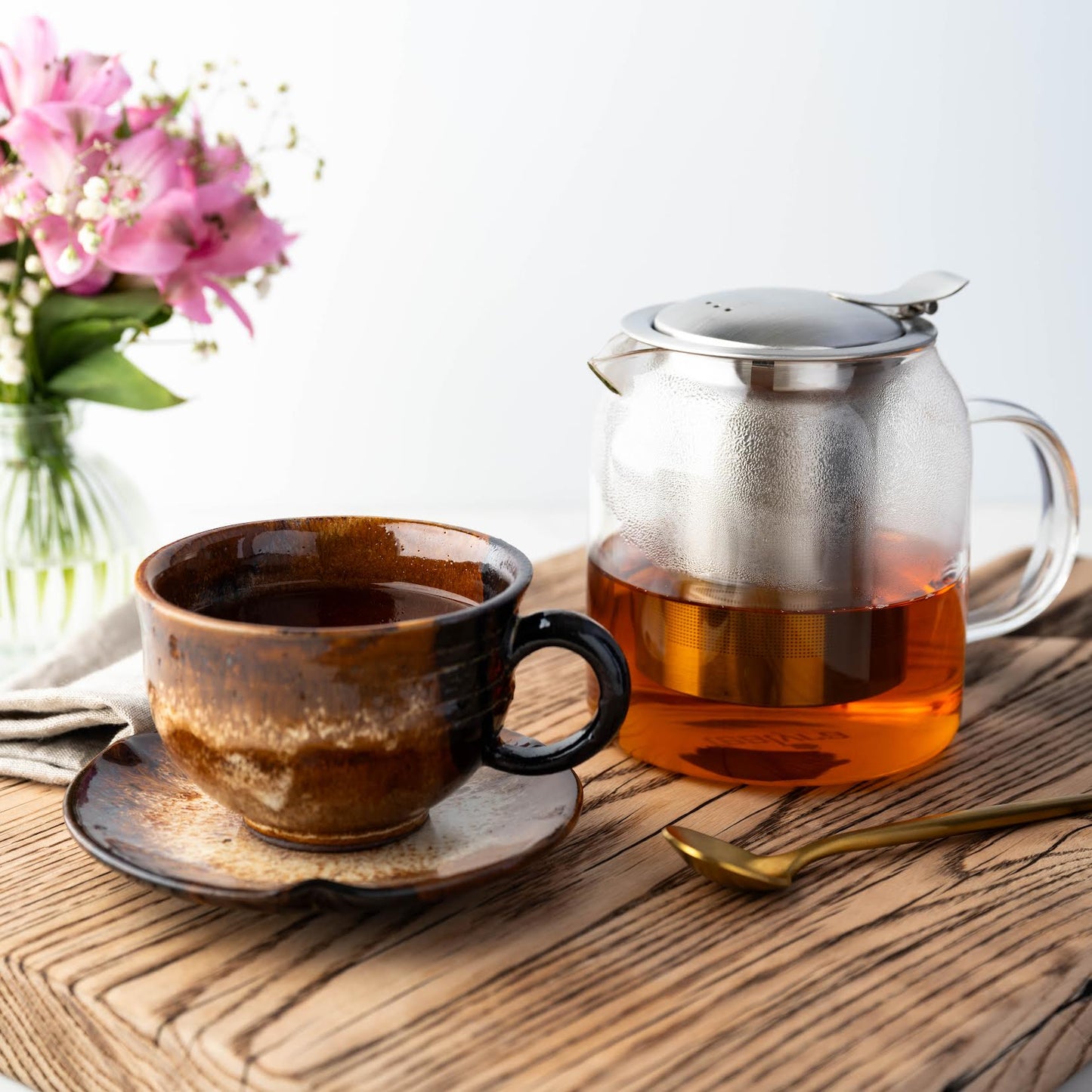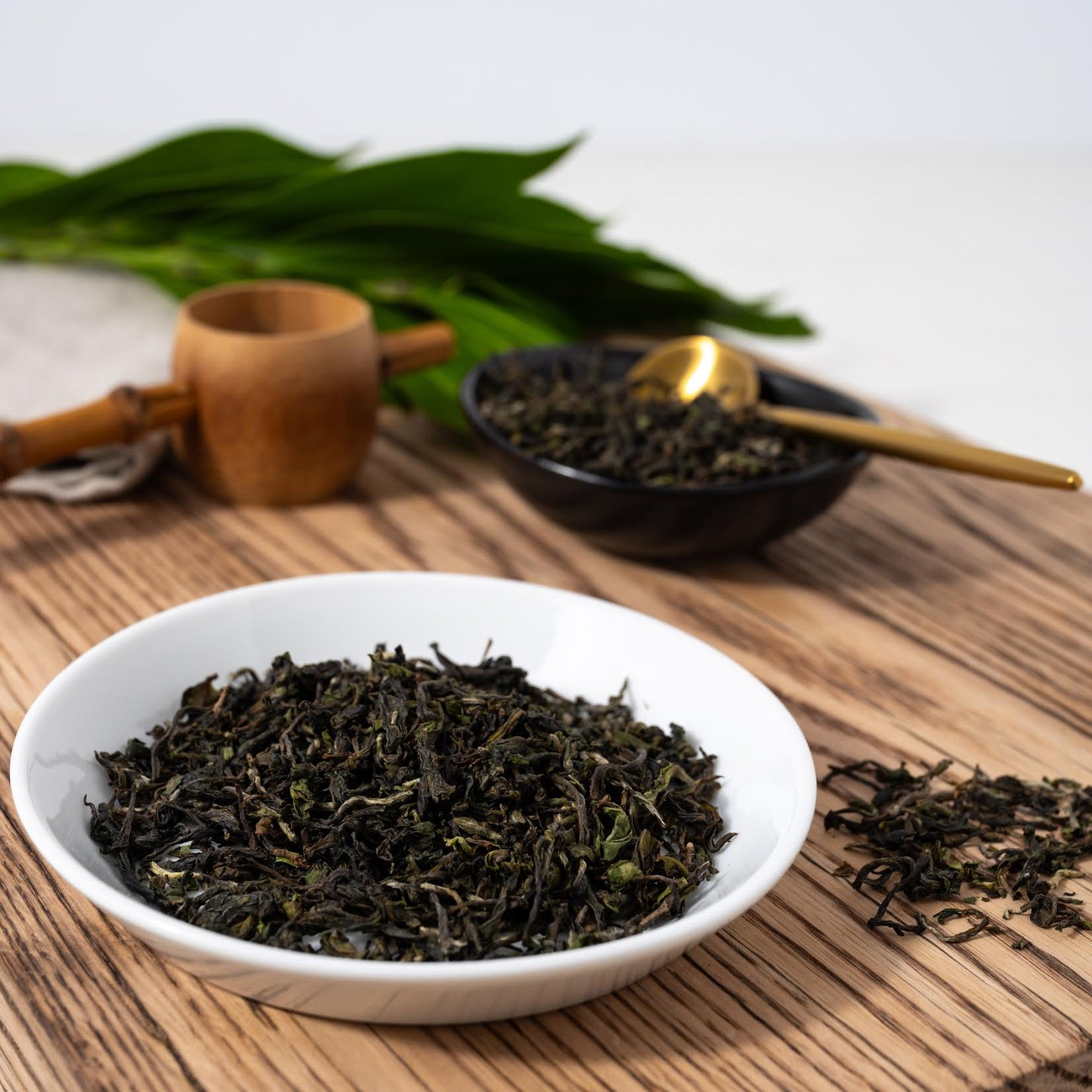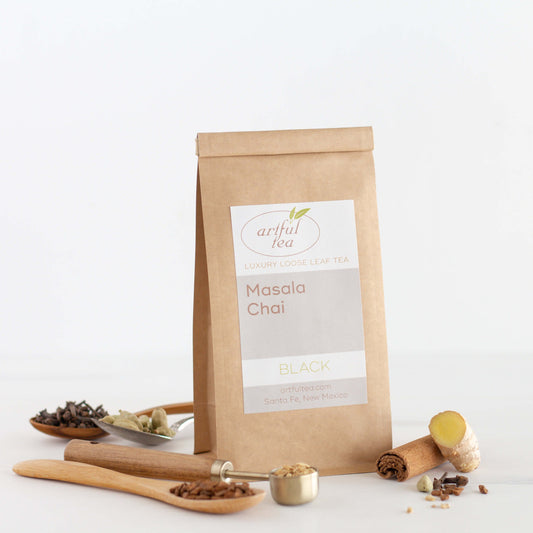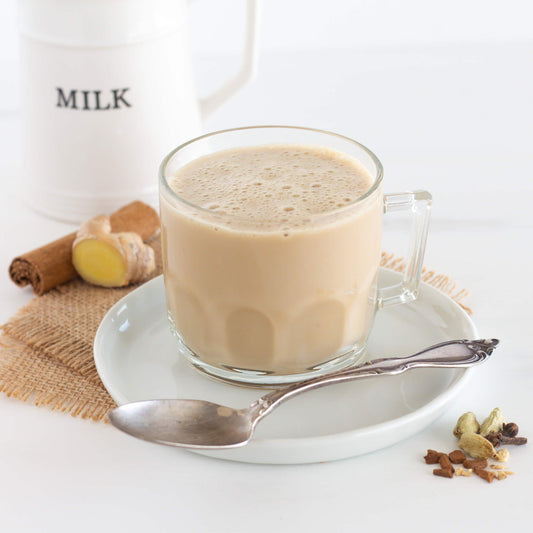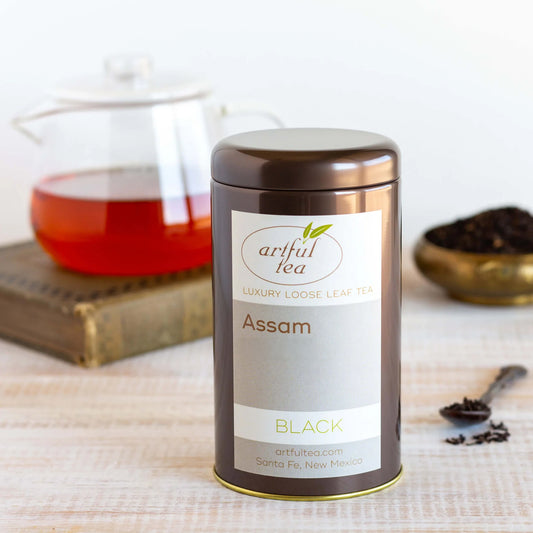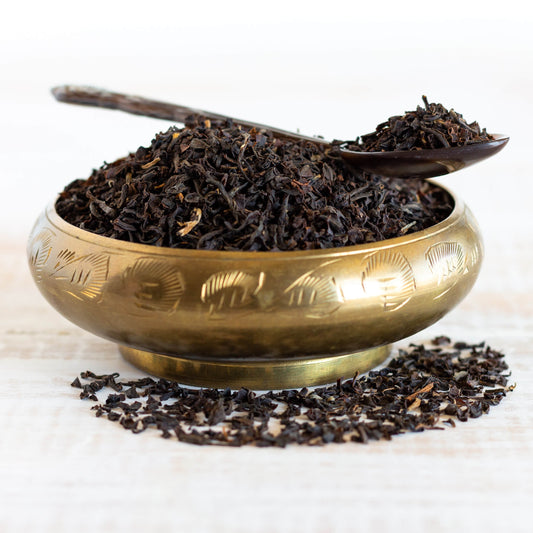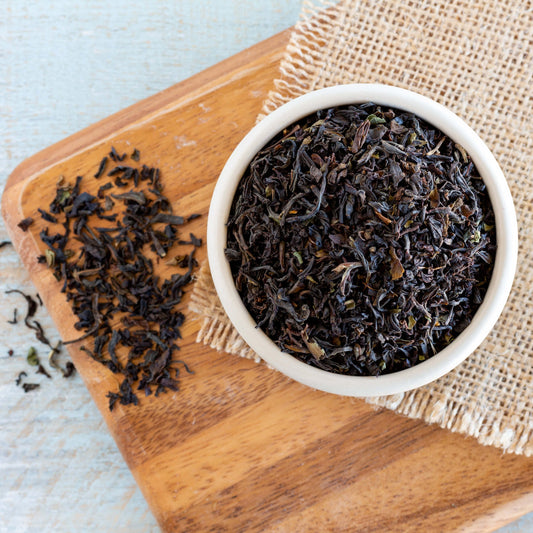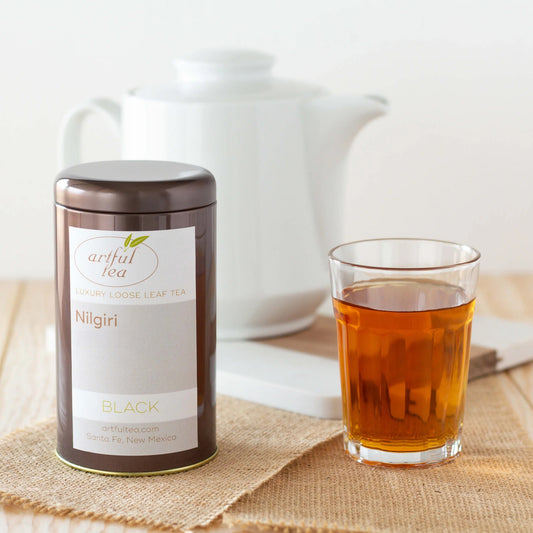Darjeeling tea: first flush vs. second flush
First flush and second flush Darjeeling teas are grown from the same plants, but harvested at different times. Darjeeling has three main flushes when fresh leaves are gathered. First flush, also known as spring flush, begins in early March and continues into early May. Our First Flush Darjeeling is an example of a classic first flush tea with a light, floral flavor and astringent bite.
The second flush begins in May and lasts until the Monsoon rains come in June. Second flush Darjeelings are the most common variety of Darjeeling, and are what most people are familiar with when they talk about Darjeeling tea. Second flush Darjeelings, like our Daily Darjeeling, typically have a more robust flavor. In October, when the rains have ceased, the third or autumn flush season lasts until the plants go dormant for the winter.
Tea made from the leaves of each flush will vary considerably, although all share similar general characteristics. Darjeeling tea is graded on a scale based on size and quality. SFTGFOP (Super Fine Tippy Golden Flowery Orange Pekoe) is the highest grade of Darjeeling tea, while tea “dust,” including the fine powder that is often found in commercial tea bags, is the lowest grade on the scale. Both our Daily Darjeeling and our First Flush Darjeeling have a grade of FTGFOP1 (Finest Tippy Golden Flowery Orange Pekoe 1).
About first flush Darjeeling
First flush Darjeeling teas are often lighter than their second flush counterparts, featuring less oxidized leaves with green and silver highlights. They brew up a golden color and have a crisp, clean flavor profile with an astringent bite. These teas are typically harvested from March to May, depending on the weather conditions of the region in which they’re grown. Because of their specific character and relatively short season, first flush teas are often some of the freshest teas available, with leaves having been plucked from the tea plant only a few months prior to being brewed up into pots of tea all around the world!
About second flush Darjeeling
Second flush Darjeeling is darker and richer than first flush Darjeeling, and it’s also more common. Sometimes called the “champagne of teas,” Darjeeling teas are grown at high elevation in the Darjeeling region of India. Second flush Darjeeling tea has floral, nutty, and muscatel notes. The specific terroir in which Darjeeling is grown, along with growing and harvesting techniques perfected over the course of centuries, contribute to its unique flavor and superior quality.
How to brew first flush Darjeeling tea
To prepare first flush Darjeeling, we recommend using a teapot, tea infuser, or tea filter. These brewing methods allow the tea leaves to expand fully and result in a more flavorful cup. Use about one teaspoon of tea leaves for every six ounces of water, and heat the water to a full boil (approximately 212 degrees). Then steep the tea leaves for two to four minutes.
First flush Darjeeling caffeine content
Like other black teas, first flush Darjeeling tends to be relatively high in caffeine. The caffeine content in tea is influenced by several factors, including the tea varietal, harvest time, preparation methods, and more. The first buds and leaves from which first flush Darjeeling is made tend to be higher in caffeine. Darjeeling is usually prepared with boiling water and has a longer steep time, which can also contribute to higher caffeine levels.
Our first flush Darjeeling
Our Avongrove First Flush Darjeeling (FTGFOP1) is sourced from the Avongrove tea garden in Rangbhang Valley, Darjeeling. Located within view of the river Balasun, these tea plants are grown at high elevation ranging from 2,200 to 5,700 feet. Fresh, floral, and slightly astringent, this tea has all the wonderful qualities of a great first flush.
Our second flush Darjeeling
Our second flush Darjeeling black tea has a medium body and a fresh, slightly nutty flavor. With a grade of FTGFOP1, these leaves yield a bright coppery brew with a mild astringency. Darjeeling tends to be lighter than most other black teas, with a unique taste and character all its own.
FAQs
What is first flush tea?
First flush tea is harvested from the very first buds and leaves of the tea plant in early spring. In addition to first flush Darjeeling, other teas harvested in spring include Shincha green tea and Himalayan Spring white tea.
What does Darjeeling tea taste like?
Darjeeling tea is nutty, muscatel, and stringent, often described as the “champagne of teas” for its delicate, floral character. First flush Darjeeling tends to be lighter and dryer, while second flush Darjeeling has a fuller body and is more robust.
Is Darjeeling a black tea?
Darjeeling is a black tea grown in the Darjeeling region of India. Like other types of tea, Darjeeling is made from the leaves of the camellia sinensis tea plant. The tea leaves are fully oxidized, which produces a darker, more full-bodied cup of tea.
Which tea is better, first or second flush?
Both first flush Darjeeling and second flush Darjeeling are excellent teas. First flush Darjeeling tends to be more delicate, and only a small amount of this tea is available each year. On the other hand, second flush Darjeeling has a fuller body and is more readily available.
